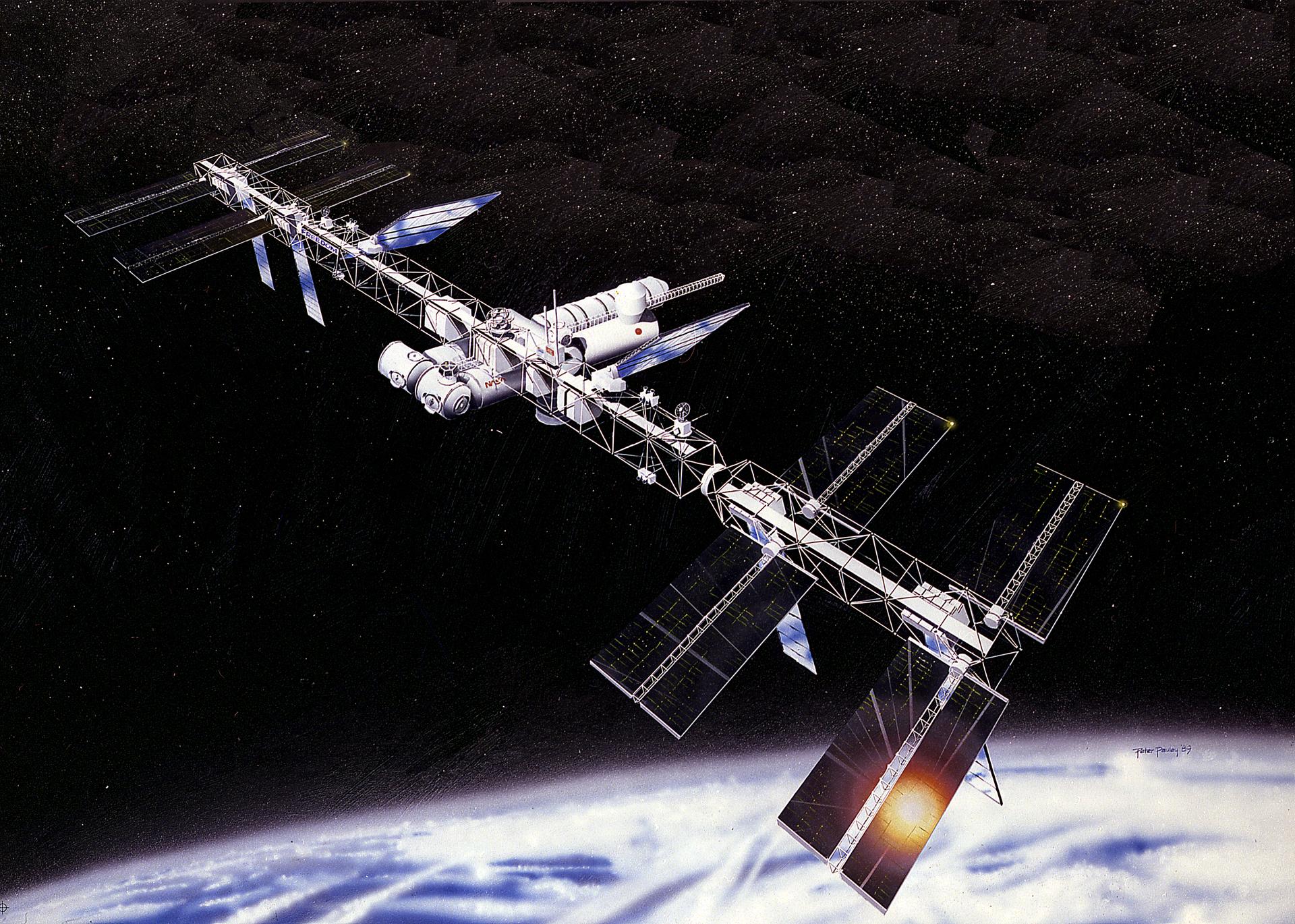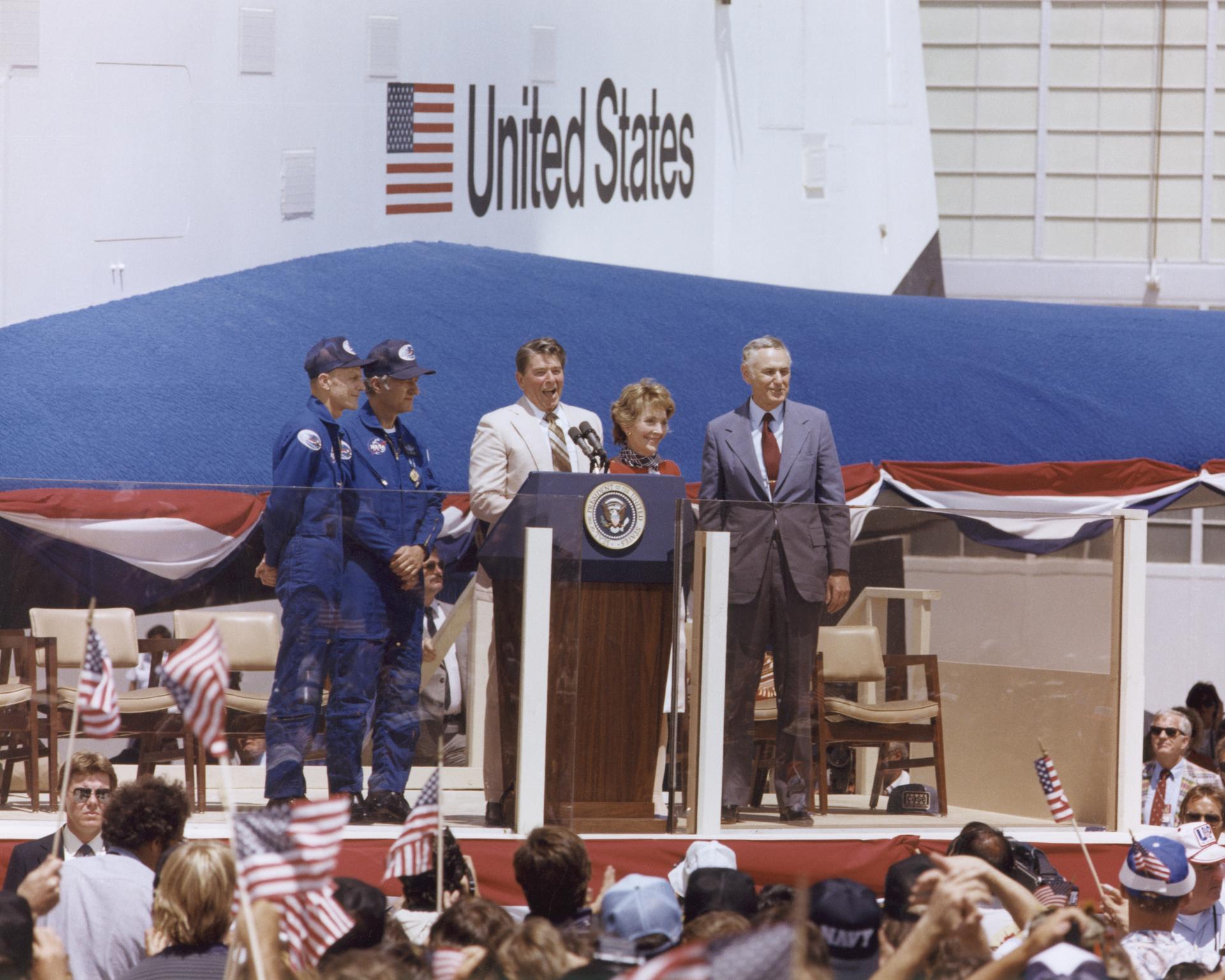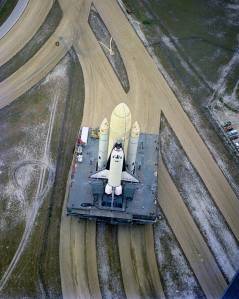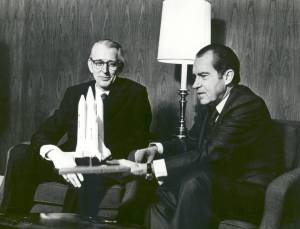During 1982, NASA decided to push for Presidential approval of a space station during 1983. In order to establish the basis for such a decision, SIG (Space) requested a study of NASA’s station proposal and alternatives to it. President Reagan was briefed on the concept of a space station on April 7, 1983, and a few days later signed this directive establishing the terms of reference for the needed study. Ordinarily, Assistant to the President for National Security Affairs William Clark would have signed the directive as Chairman of SIG (Space); the White House decided to have the President himself sign the document as an indication of the study’s significance. Because the various agencies participating in the study mandated by the directive could not reach a consensus on a recommendation to the President, that study was never completed, and other paths were followed as the basis for President Reagan’s decision to approve the station program. Document available in NASA Historical Reference Collection, History Office, NASA Headquarters, Washington, DC. Page references to original document in brackets.
[1]
Space Station
April 11, 1983
Objective
A study will be conducted to establish the basis for an Administration decision on whether or not to proceed with the NASA development of a permanently based, manned Space Station. This NSSD establishes the Terms of Reference for this study.
Guidelines
The specific policy issues to be addressed are the following (responsible agencies are indicated in parenthesis):
- How will a manned Space Station contribute to the maintenance of U.S. space leadership and to the other goals contained in our National Space Policy? (NASA)
- How will a manned Space Station best fulfill national and international requirements versus other means of satisfying them? (NASA/State for national and international civil space requirements; DOD/DCI for national security needs.)
- What are the national security implications of a manned Space Station? (DOD/DCI)
- What are the foreign policy implications, including arms control implications, of a manned Space Station? (State/NASA/ACDA)
- What is the overall economic and social impact of a manned Space Station? (NASA/Commerce/State)
These five policy issues will be addressed for each of the four scenarios outlined below.
In order to assess the policy issues in a balanced fashion, NASA will provide a background paper outlining four example scenarios that represent possible approaches for the continuation of this nation’s manned space program. These example scenarios are: [2]
- Space Shuttle and Unmanned Satellites
- Space Shuttle and Unmanned Platforms
- Space Shuttle and an Evolutionary/Incrementally Developed Space Station
- Space Shuttle and a Fully Functional Space Station A separate, unrelated, generic space requirements paper will be produced for use in addressing the national policy issues. The representative set of requirements for each space sector will be provided by DOD/DCI for national security and NASA/DOC for civil programs. A drafting group consisting of representatives of the DCI, DOD, DOC and NASA will coalesce the requirements into a single document. It will represent currently identifiable official agency statements of requirements for a Space Station. Long-term agency requirements and objectives should also be included.
Implementation
A Working Group under the Senior Interagency Group for Space has been established to conduct this study. The Working Group is chaired by NASA and includes representatives from DOD, DOC, DCI, DOS, and ACDA. The Working Group will produce a summary paper that assesses the issues and identifies policy options. Results of the study will be presented to the SIG (Space) not later than September 1983 prior to presentation to the President. Papers produced by the Working Group will not be distributed outside the Executive Branch without the approval of the SIG (Space). The SIG (Space) may issue more detailed Terms of Reference to implement this study.
/signed/
Ronald Reagan






























